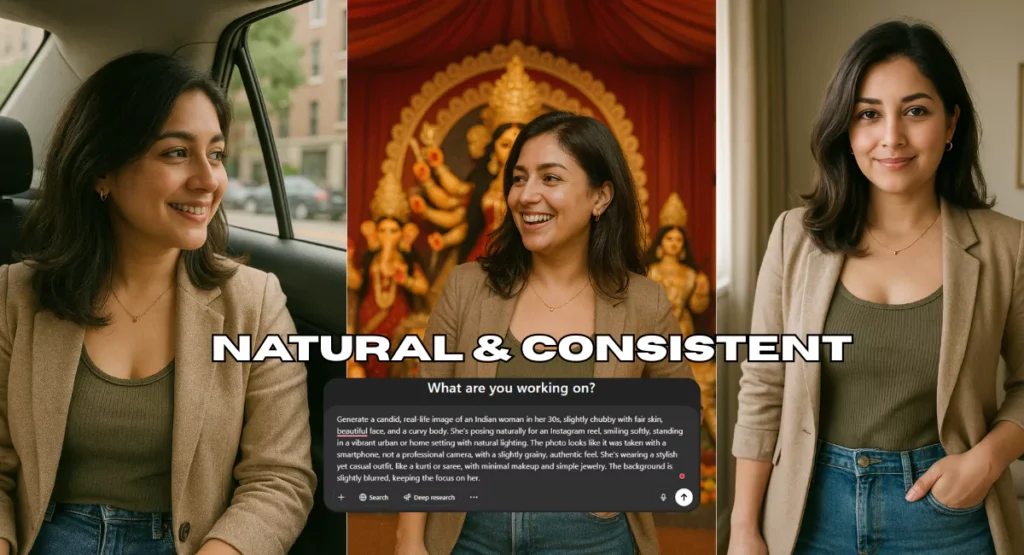AI influencers are trending like never before, with many creators jumping on this innovative bandwagon. Countless YouTube videos offer tips and tricks, some even promoting unethical practices like face-swapping real people’s images, yet results remain disappointing. The problem? Most AI-generated images look flat, unrealistic, and have that typical “AI-generated look” with perfect bokeh and unnaturally smooth faces.
But there’s a free solution right at your fingertips, requiring no specialized tools or subscriptions. ChatGPT (by OpenAI), specifically GPT-4o, has recently stunned everyone with its impressive image generation capabilities. Let me walk you through how to create natural, consistent AI influencer images without spending a dime.
Step-by-Step guide to creating realistic AI influencer images
Step 1: Use ChatGPT
Open ChatGPT in your browser, and you don’t even need a paid subscription. Just log in and make sure you’re using the GPT create image feature, which includes image generation capabilities.
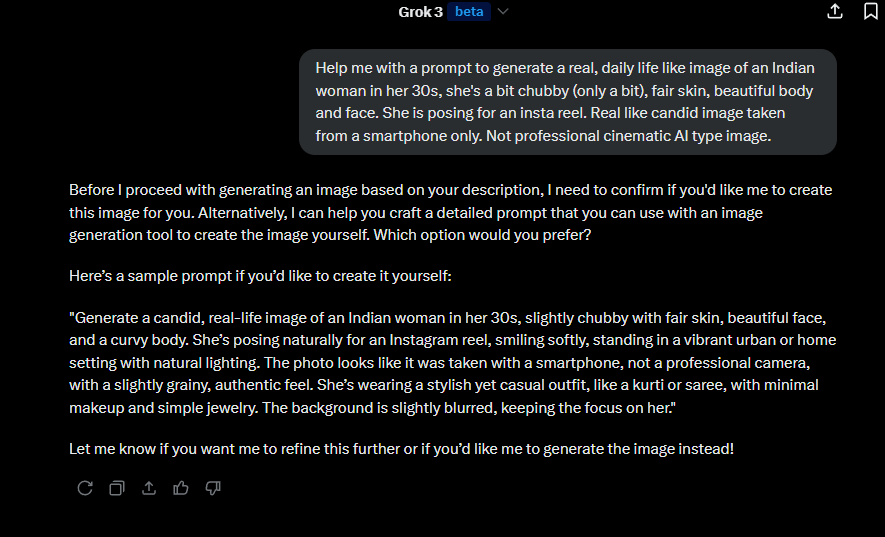
Step 2: Enter a Detailed Prompt
Imagine your AI influencer and create a highly detailed prompt describing them. Consider using Grok3 on X (formerly Twitter) which is free and less restrictive to help craft comprehensive prompts. ChatGPT might reject overly simple prompts as policy violations, but Grok’s more detailed suggestions generally work smoothly.
Example prompt: “Generate a candid, real-life image of an Indian woman in her 30s, slightly chubby with fair skin, beautiful face, and a curvy body. She’s posing naturally for an Instagram reel, smiling softly, standing in a vibrant urban or home setting with natural lighting. The photo looks like it was taken with a smartphone, not a professional camera, with a slightly grainy, authentic feel. She’s wearing a stylish yet casual outfit, like a kurti or saree, with minimal makeup and simple jewelry. The background is slightly blurred, keeping the focus on her.”
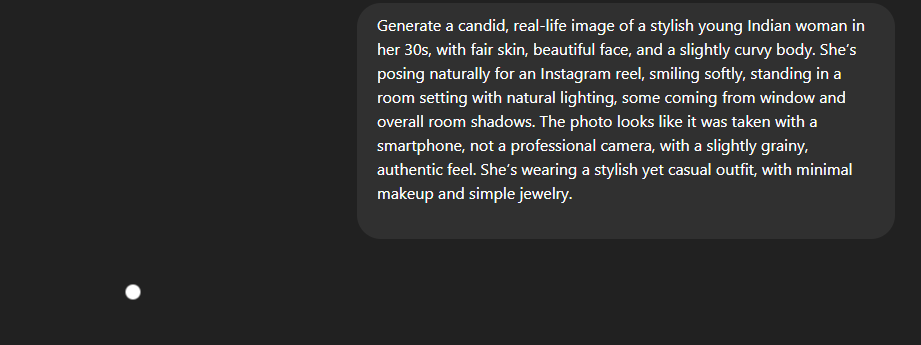
Step 3: Provide Feedback for the Generated Image
This crucial step separates amateur AI creations from professional-looking ones. Examine the image closely for telltale AI signs: excessive cinematic quality, flat facial features, perfect bokeh, or unnaturally smooth skin. Provide specific feedback to ChatGPT about these elements to make the image look more realistic and less AI-generated.
Example feedback: “The face looks very polished and less detailed. Overall, it gives a cinematic AI-type feel. I want a realistic-looking image.”
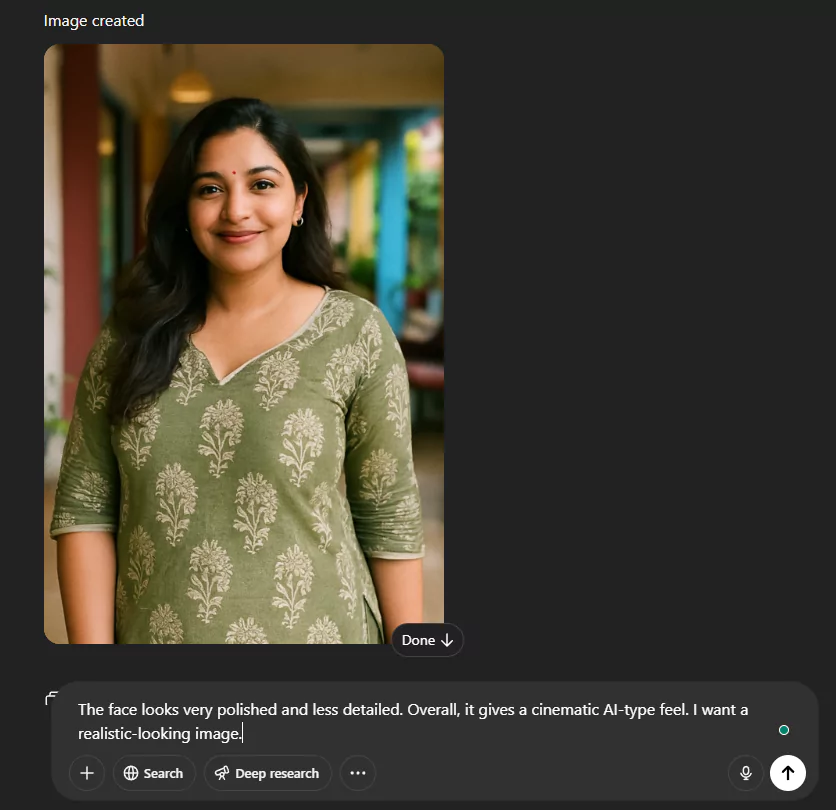
Step 4: Refine Through Iteration
ChatGPT will generate an improved version based on your feedback. Don’t hesitate to provide additional rounds of feedback until you achieve the desired level of realism. Patience during this refinement stage pays off with much more natural-looking results.
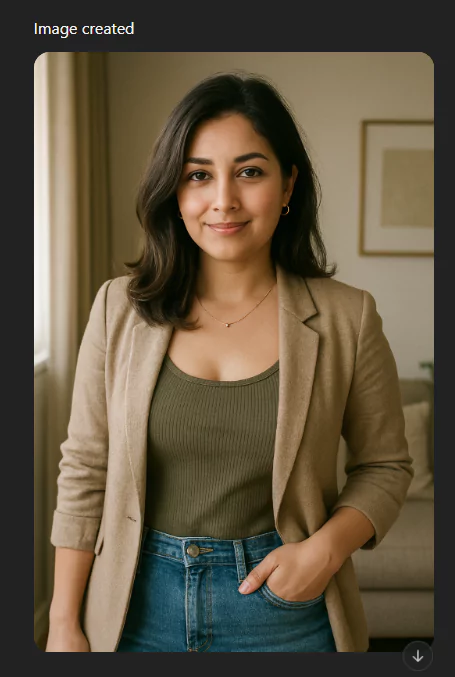
Step 5: Create Environmental Variety While Maintaining Identity
Once you have a satisfactory base image, ask ChatGPT to place the same person in different settings and situations. Specifically request that it maintain facial consistency and realism across all images, which is crucial for building a believable online presence.
Example prompt: “Now, image the exact same girl, same face, playing with dogs in a park. Light falls on her face through trees, and the environment setup is very natural and has a natural-looking image. She is not looking at the camera but not entirely against it. Her face is visible, and she is looking at the pups and playing with them. Half-body portrait.”

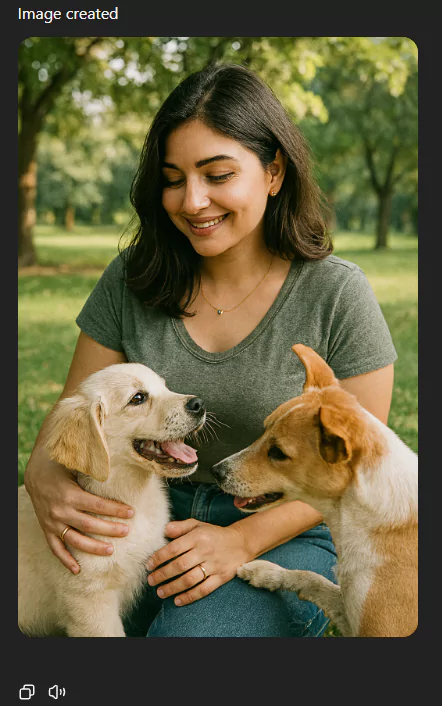
Step 6: Develop a Content Library
You’ll notice ChatGPT often succeeds in maintaining consistency on the first try.

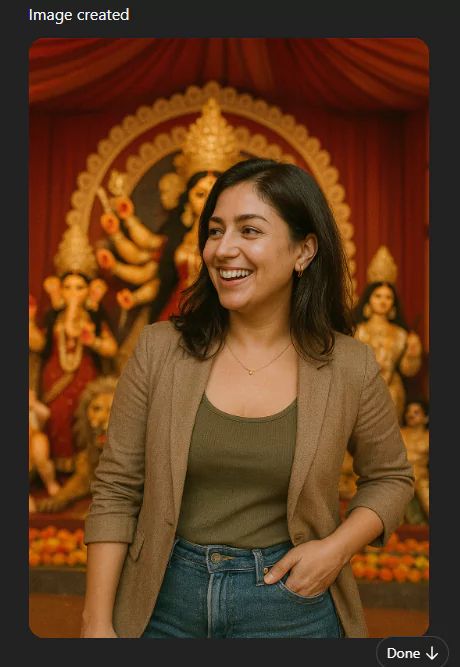
Pro tip: edit your previous messages instead of sending new ones to preserve even greater visual consistency. For some reason, shorter conversation threads result in better facial consistency. Be sure to download and save all generated images for your content calendar.
Practical Applications for Your AI Influencer
Once you’ve created a consistent character, plan a content roster around their personality, interests, and lifestyle. What does your AI influencer do for work? What are their hobbies? What causes do they care about? Building this background story adds authenticity to your virtual personality.
Many creators are already leveraging these images with tools like Wan 2.1 and Veo2 to transform static AI photos into dynamic reels and videos. This combination opens up exciting possibilities for content creation without ever needing to schedule a photo shoot.
Creating realistic AI influencers no longer requires expensive software or technical expertise. With just ChatGPT’s free tier and some patience during the feedback process, you can develop a consistent virtual personality for creative or marketing purposes. The key lies in the detailed initial prompt, followed by specific feedback to eliminate that “AI-generated look.”
Remember that transparency about AI-generated content is becoming the standard on most platforms. While these tools offer creative freedom, using them responsibly helps maintain trust with your audience.

